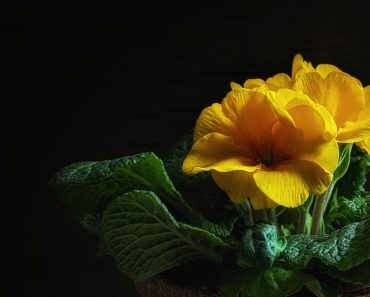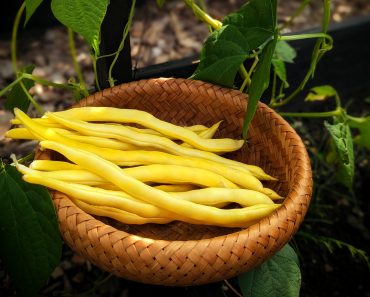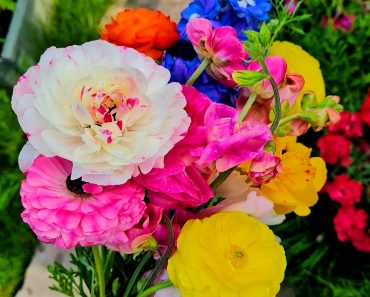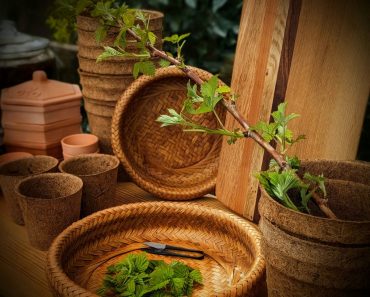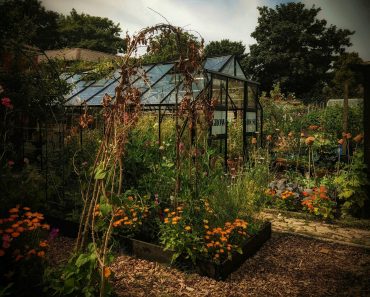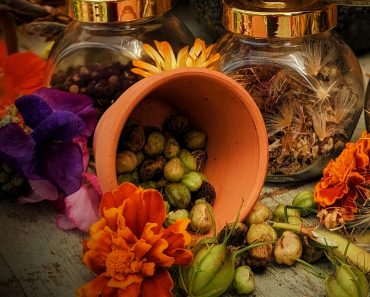Ah Red Cabbage…nature’s Jewels! Aren’t they beautiful ? Vibrant Globes of goodness, grown by gardeners for centuries! But there is a nack to it! Here’s how I grow Mine…

Cabbage Origins
Cabbage has a long and ancient history and was brought to England by the Romans. Back then the cabbage was mainly consumed by the poor. The poorer classes relied on it because it was easy to cultivate and could be grown in the garden over longer periods. The hardiness of the vegetable meant the Cabbage could be harvested even in early Winter, at a time when little else was growing.
This post may Contain Affiliate Links please see my Disclosure Policy
Food for the Poor
The Cabbage could be boiled, braised, stewed and pickled. From the 14th century onwards a peasant family diet would mainly consist of Cabbage based soups and stews, which would sustain and nourish the family during the long winter months. It wasn’t until the 18th Century that the humble Cabbage made its way to the upper class plates.
Captain Cook and The Cabbage!
Captain Cook the Great British Explorer insisted on feeding his crew the humble Cabbage, he believed pickled Cabbage (sauerkraut) would prevent his crew from developing Scurvy.
Cabbage to The Rescue
The Lack of vitamin C in the diet of sailors on long voyages often resulted in the disease scurvy which often times proved fatal. The first symptoms to present, included bulging eyes, scaly skin, loose teeth, bleeding gums and easy bruising. To counter this, on Cook’s first Pacific voyage in 1768, he decided to trial the efficacy of Sauerkraut in combating Scurvy.
The Endeavour
His Ship The Endeavour, loaded 7,860 pounds of sauerkraut, which allowed for a ration of 2 pounds per man per week. Cook reported back to the Victualling Board in July 1771 that ‘no dangerous’ cases of scurvy had occurred on the voyage and credited Sauerkraut as the reason.
So there we have it, the wonder vegetable that can cure Scurvy! Who knew?
Thankfully Scurvy is nowhere near as common as it once was, thanks to the abundance of fresh Fruit and Vegetables available today cases are incredibly rare! There are many reasons to grow Cabbage…homegrown goodness, flavour, self-sufficiency. But if you’re looking for an overall Summary, here is a short breakdown of why you should grow and include Red Cabbage in your diet…
The Health Benefits of Red Cabbage
Red cabbage is a wonderful source of vitamin K, calcium, magnesium and zinc, which as a whole helps maintain healthy bones. Red cabbage is also very high in fiber, which helps the body digest foods more efficiently and keep your digestive system tiptop.

What Makes a red Cabbage Red?
The most familiar Cabbages are white, so what gives the Red Cabbage that beautiful Jeweled tone? The Red cabbages colouring is due to the presence of anthocyanins. These plant pigments produce red, pink, violet and magenta colors within different parts of food plants.
Description and Taste Characteristics
Red cabbage has a wonderful texture and flavour. Like Green cabbage it is rounded and has tightly wrapped waxy leaves. The leaves are more ,a rich Burgundy than a red and due to the lack of water weight, the leaves are somewhat chewier and coarser than the more tender chinese cabbage varieties. The taste of Red Cabbage can differ depending on how it is prepared, for example...fresh uncooked leaves have a slightly peppery taste, but when cooked they develop a sweeter flavour.
How to grow Red Cabbage
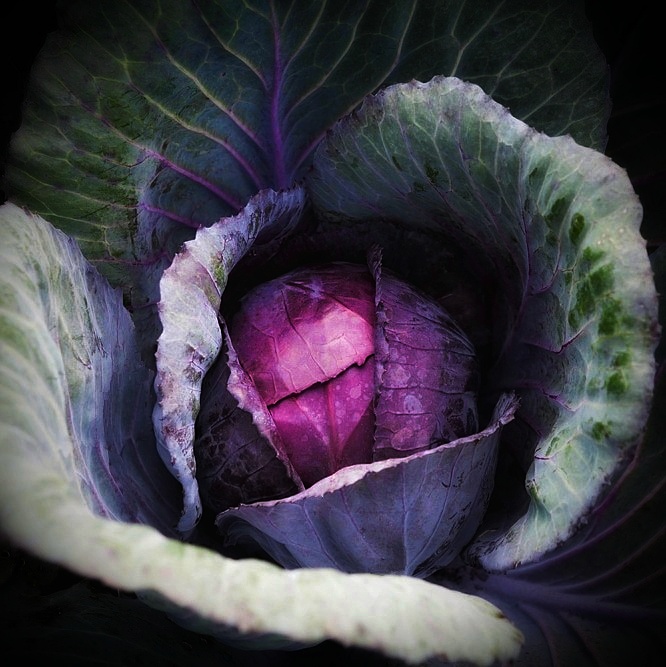
Affiliate Links
Buy Red Drumhead Cabbage Seeds
Buy Green Cabbage ‘Mozart’ Seeds
Growing red cabbage is done the same way as growing Green Cabbage. So use the following process for both types.
Sowing Cabbage Seeds
- For best results, I like to sow my Red Cabbage seeds indoors, from February to Mid April (expected harvest August-November)
- Sow seeds 2 cm deep in pots, modules or trays of good quality compost, and place on a sunny windowsill to germinate.
- Make Sure the compost always remains damp for optimum growing conditions

Planting Out
After 3-5 weeks, once the Cabbage plant has some established foliage, plant the young cabbage plants outdoors (April-June). Be sure to Harden off indoor raised plants first.
What Does Hardening Off Mean?
Plants raised indoors or in a greenhouse environment, need to be acclimatised to cooler temperatures and increased air movement for about two to three weeks before they are planted outdoors permanently . This is a ‘toughening up’ practice to prepare the plants for their new environment.
How to Harden Off
Place your plants out for a couple of hours in a shady part of the garden. The next day, leave them out again for two hours, but this time allow the plants an hour of direct sunshine in the morning. Gradually continue to increase the length of time the plants are in direct sunshine over the course of roughly two weeks.
Where to Plant Red Cabbage
Cabbages grow their best in a sunny spot with moist soil and plenty of well-rotted organic matter dug in. Plant Cabbages 12-24 inches apart in rows. The closer you plant them together, the smaller the cabbage heads will be, so bear this in mind.
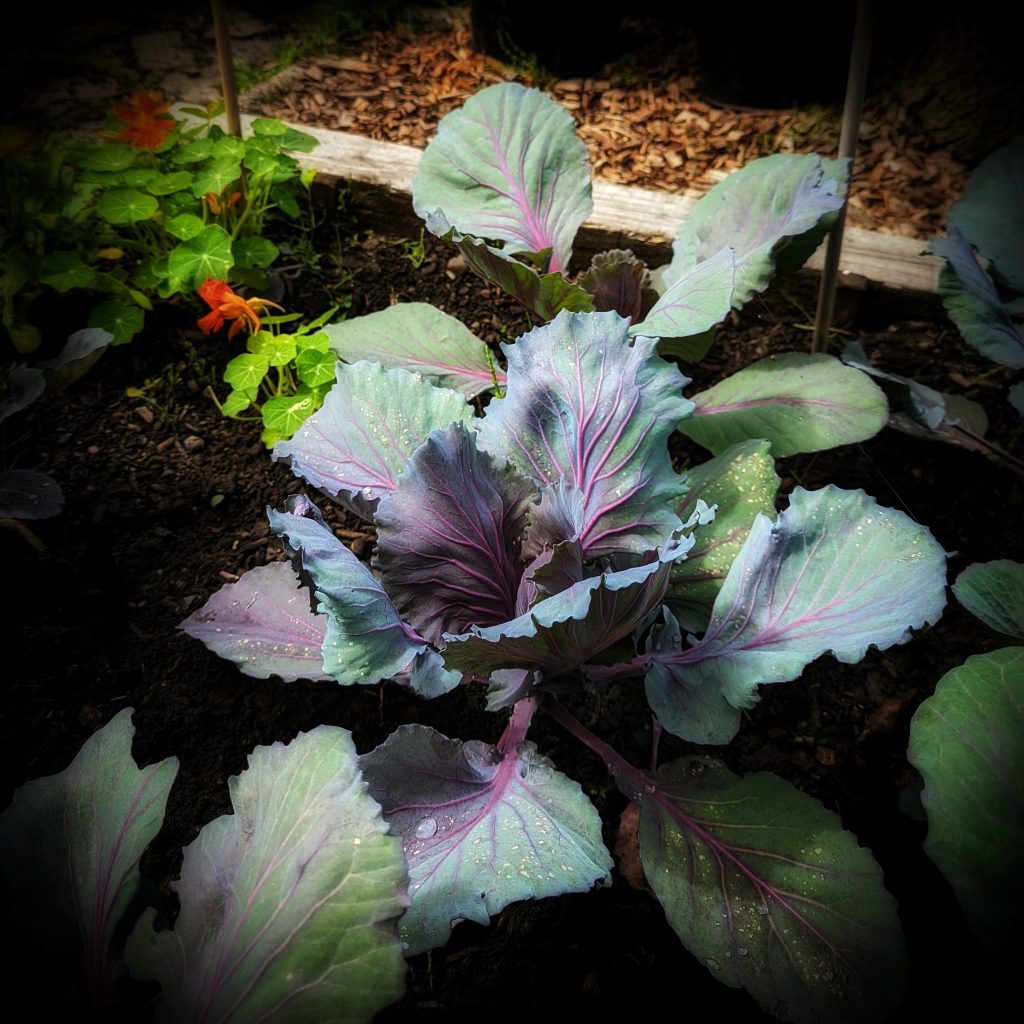
Companion Plants for Cabbages
Marigolds and Calendula are a good companion plant for cabbages as they repel cabbage moths. Beans and Cucumbers also make good bed buddies. Aromatic Herbs such as Chamomile, chives, coriander, dill, mint, thyme, hyssop, sage, and oregano will all play well with Cabbage. * Do not plant Cabbage beside, Tomatoes or Strawberries

Taking Care Of Your Cabbage plants
- Water Regularly
- Feed fortnightly with a nitrogen-rich liquid feed.
- Keep the Cabbage bed Free of Weeds
- Cover crops with a fine mesh net. This helps to prevent White Cabbage Butterflies laying their eggs on your Cabbage Leaves. They can destroy a crop in record time!

- Top Tip -Plant Thyme and dill in your Cabbage Bed, the Cabbage moths do not like their fragrant leaves and will choose to move on to a better space.
Can You Grow Red Cabbage in Pots?
Absolutely, much like my pot grown Broccoli, Cabbage is more than happy to grow in containers.
How To Harvest Red Cabbage
Around 20 weeks from sowing your Cabbages should be ready to Harvest. Use a sharp knife to cut the cabbage, leaving roughly 10cm of stalk behind. Why do this? You may be treated with a second, smaller cabbage crop…score a shallow cross on the stump and cross your fingers.
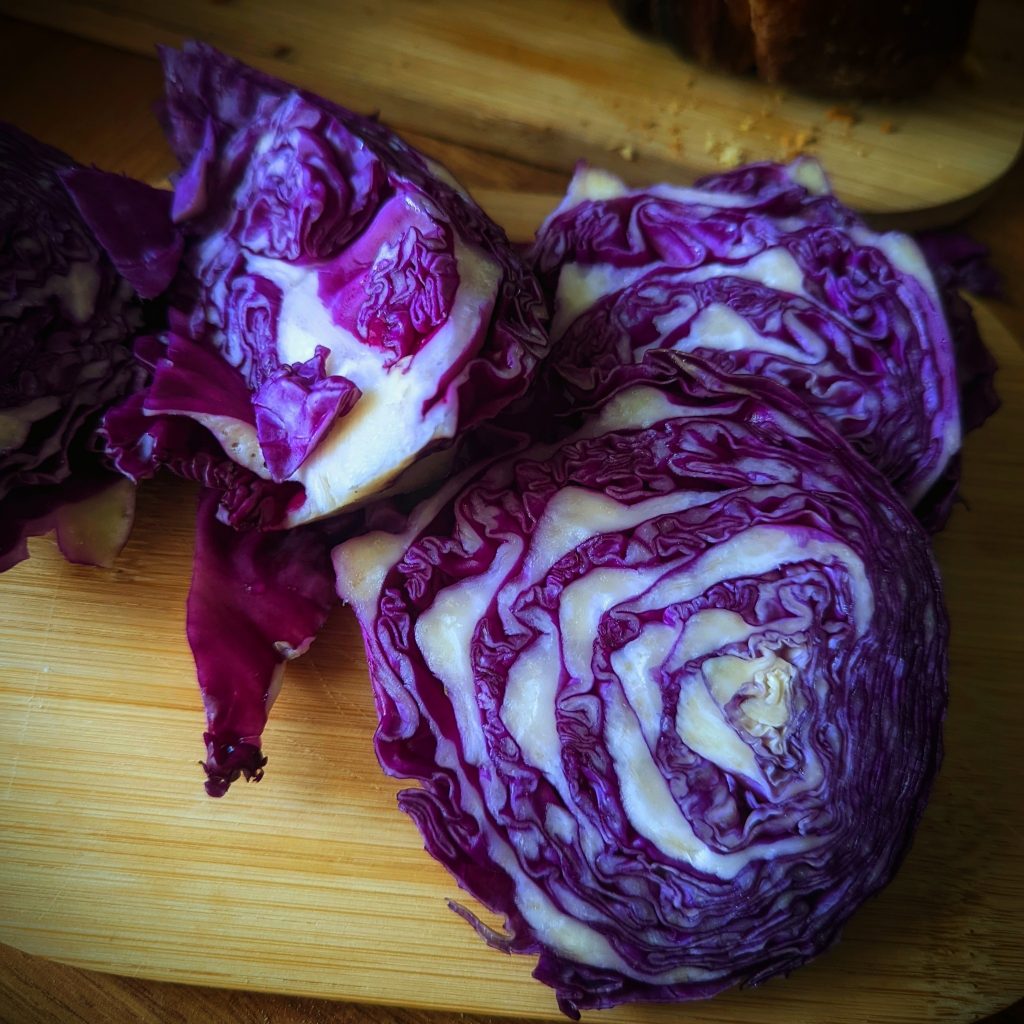
Want To Grow A Vegetable Garden?
Have a look at my DIY Greenhouse , DIY Potting shelter and Potting Shed and have a gander at these ‘How To’ Veggie Posts…
Looking For more ‘Homely’ Inspo ?
Have a Nosey Around the Blog! See what i’ve been Baking, Growing and Drinking! Also, pop over and say Hi on Instagram
*Any specific health claim or nutritional claims or information provided on the Website are for informational purposes only. Nothing on the Website is offered or intended to be a substitute for professional medical, health, or nutritional advice, diagnosis, or treatment. This Website is not intended to diagnose, treat, cure or prevent any disease. You assume full responsibility for consulting a qualified health professional regarding health conditions or concerns.

